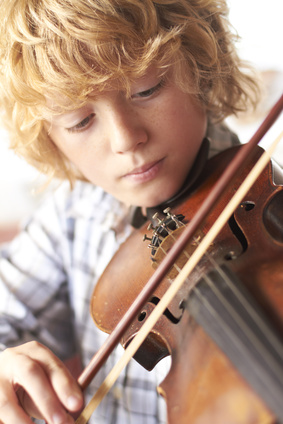After several days of cold weather in Los Angeles, it’s sunny skies and warm temps.
 Following the hiking trail in Eaton Canyon.
Following the hiking trail in Eaton Canyon.

 An article entitled When Repetition isn’t the Best Practice Strategy sheds some light on what really works when practicing music. Although the technique seems geared toward more advanced students’ practice routines, it can be beneficial for students at every level.
An article entitled When Repetition isn’t the Best Practice Strategy sheds some light on what really works when practicing music. Although the technique seems geared toward more advanced students’ practice routines, it can be beneficial for students at every level.
The article suggests that an effective practice routine could consist of choosing two or three focus points which students can alternate between during a practice session. For example, a beginner might play song A, then play song B, then play song C, and then play the songs again in a varied order. By alternating between songs the student will be more focused during each piece. For advanced students, the focus could alternate between different sections or passages of a longer piece. The student might play section A for 3 minutes, section B for 3 minutes, section C for 3 minutes, and so forth.
The most important takeaway about practicing is that the quality of the practice is more important than the length of time practicing. We agree that an efficient and focused practice session should be the objective for students of all levels.
Rhythm doesn’t come naturally to everyone, but it can be taught to anyone at any age. We enjoyed this engaging article from BBC News which provides a thought-provoking example of how music instruction provides academic benefits.
 Here are four reasons why learning a musical instrument can be so fulfilling.
Here are four reasons why learning a musical instrument can be so fulfilling.
For information about music lessons at the Altadena Academy of Music, please call (626) 296-0799 or use our email contact form.
For many beginning students, practicing scales may seem like the least interesting part of their practice routine. However, as professional musicians of all genres and instruments know, a proficiency in the relevant scales can carry your musicianship to the advanced level.
Music is based on a scale, which is a set of notes in a predetermined order. The scale that music is based on varies depending on the genre, but the scale will determine the set of notes and patterns to be played in the song. The scale can be used to compose a melody, to improvise a solo, and to accompany other musicians.
Practicing scale patterns on instruments helps students gain the muscle memory necessary for each scale. Gaining this proficiency with scales can take a number of years, depending on the instrument. The reward for doing so is well worth the effort: a student who becomes familiar with different scales will have an easier time improvising music in any desired genre of music like jazz, rock, pop, and even classical.
For information about music lessons at the Altadena Academy of Music, please call (626) 296-0799 or use our email contact form.
The winds include two families of instruments: Brass and Woodwinds.
French horn, trumpet, trombone, and tuba are common brass instruments. Examples of woodwinds are clarinet, flute, recorder, and saxophone
As indicated by their name, wind instruments require a significant amount of breath to play them. It is recommend that a student be at least 8 years old to start learning a wind instrument (with the exception of recorder) because the student will have a larger lung capacity which will make learning the instrument easier and more enjoyable.
For students younger than 8 who would like to learn a wind instrument, the recorder is often the ideal instrument to start with. The recorder is small and requires less breath capacity to play. With recorder lessons, students learn the fundamentals of music, rhythm and note-reading. Since the recorder is also a wind instrument, students learn breathing techniques that would help them transition to learning a brass or woodwind instrument of their choice in the future.
For information about music lessons at the Altadena Academy of Music, please call (626) 296-0799 or use our email contact form.
Congratulations to Altadena Academy of Music student Princess Anniyhel for her outstanding vocal performance at her debut birthday party! Anniyhel is accompanied on piano by her instructor Daniel Brummel.
Special thanks to Jeanne, the artist who contributed the Venice themed wall hanging that now decorates one of our music lesson rooms! 
For information about music lessons at the Altadena Academy of Music, please call (626) 296-0799 or use our email contact form.
The flute is a delicate instrument made of precious metals with many small and fragile key mechanisms. Proper care and maintenance will help keep your flute in good working condition. Special thanks to music educator and flutist Melissa Reichert for sharing these flute care and maintenance tips.
For information about music lessons at the Altadena Academy of Music, please call (626) 296-0799 or use our email contact form.
Photos taken while following the Sam Merrill Trail to Echo Mountain in the Angeles National Forest.
The trail begins at the beginning of North Lake Avenue in Altadena, which is pictured below with Pasadena in the background.
Enjoying the view of North Lake Avenue in Altadena and Old Town Pasadena.
 For information about music lessons at the Altadena Academy of Music, please call (626) 296-0799 or use our email contact form.
For information about music lessons at the Altadena Academy of Music, please call (626) 296-0799 or use our email contact form.